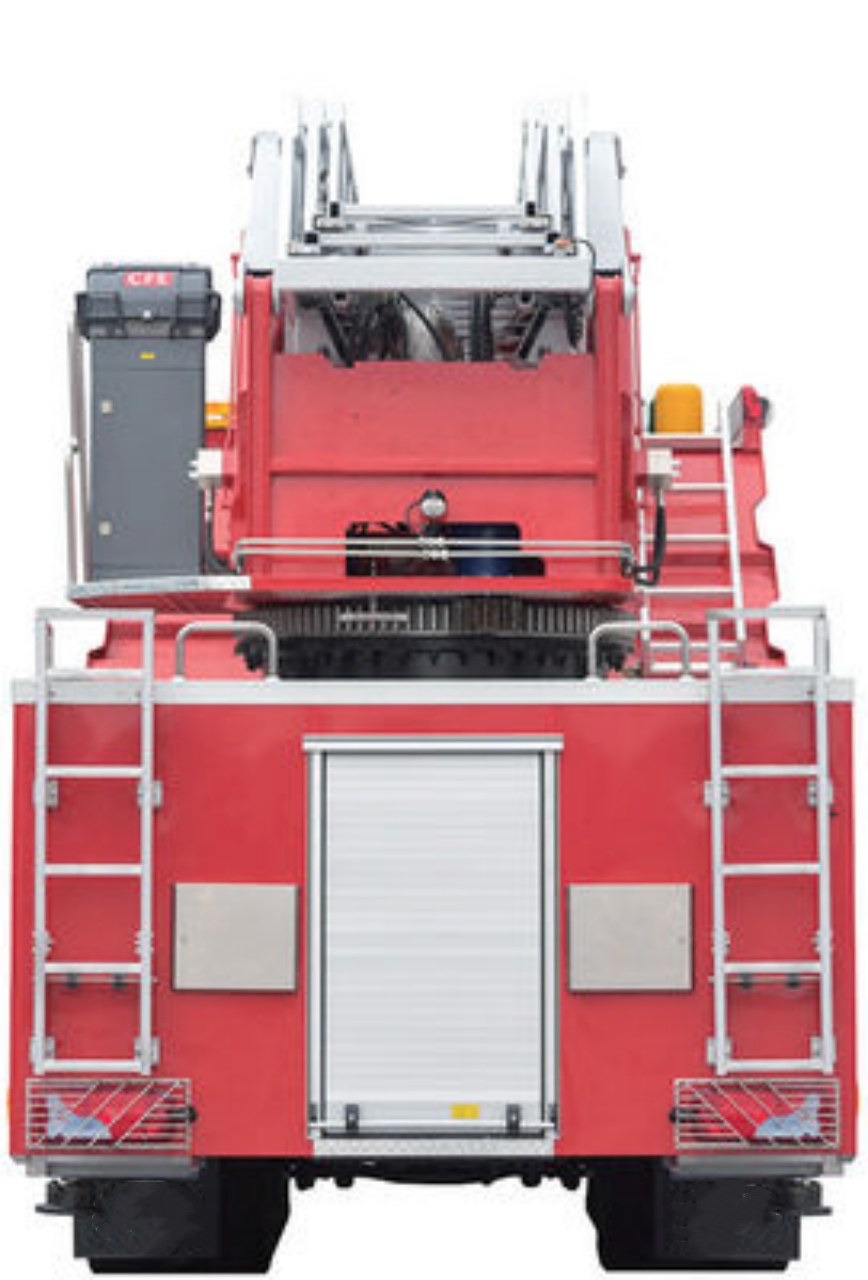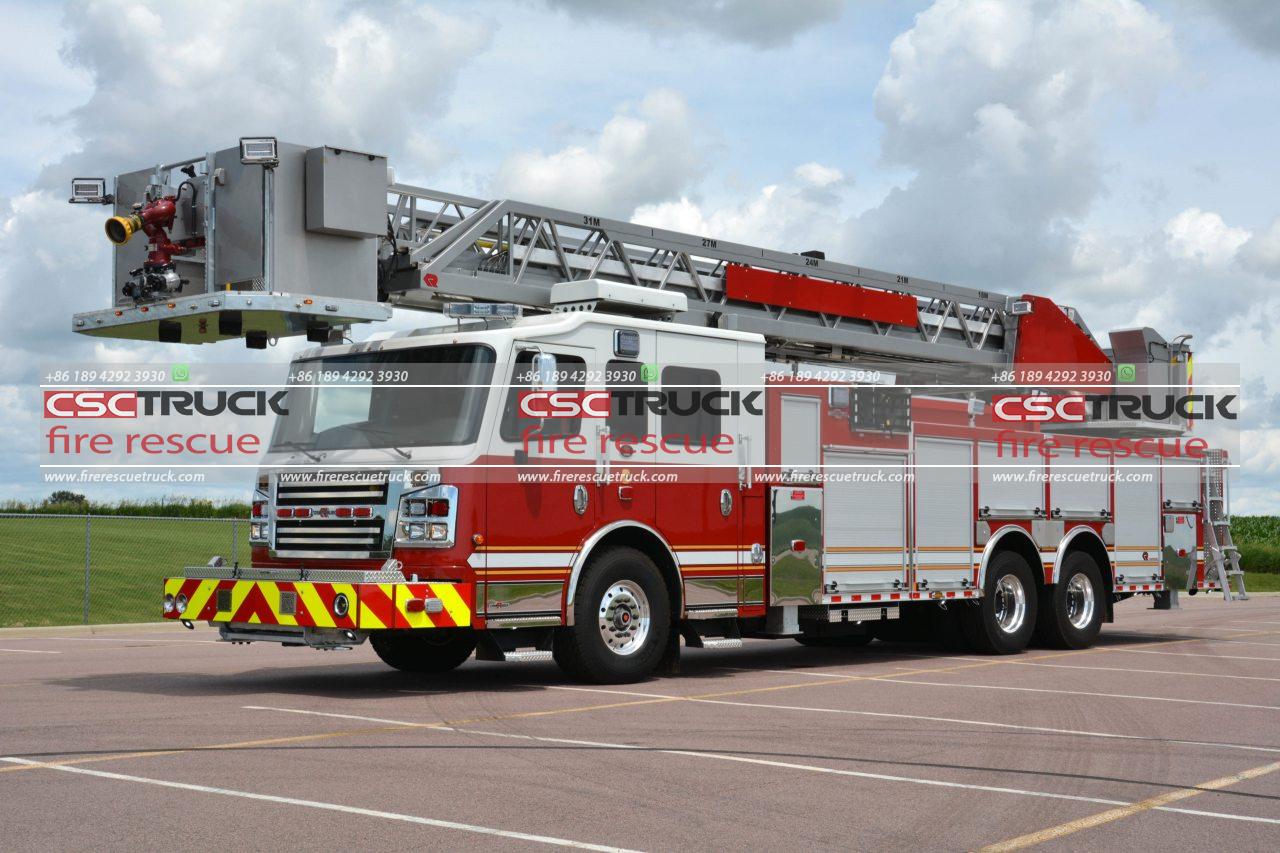Fire trucks are among the most iconic and vital pieces of equipment in any fire department. One of the standout features of many fire trucks, particularly aerial ladder trucks, is the long, extendable ladder mounted to the vehicle. These ladders allow firefighters to reach great heights, conduct rescues from tall buildings, and direct water streams to fight fires from above. A crucial aspect of using these ladders safely and effectively is understanding the angle at which they are deployed. So, what is the angle of a fire truck ladder? Why is it important? Let’s explore.
The Basics of Fire Truck Ladders
Fire truck ladders, particularly aerial ladders, are designed to be extendable and adjustable. They can be rotated horizontally (slewed) and adjusted vertically (elevated) to reach the desired position. Some ladders are simple straight extensions, while others are articulated for more flexible maneuvering.
The key measurements that define how a ladder can be used include:
- Vertical reach: How high the ladder can extend.
- Horizontal reach: How far it can extend outward at a lower elevation.
- Angle of elevation: The angle formed between the ladder and the ground.
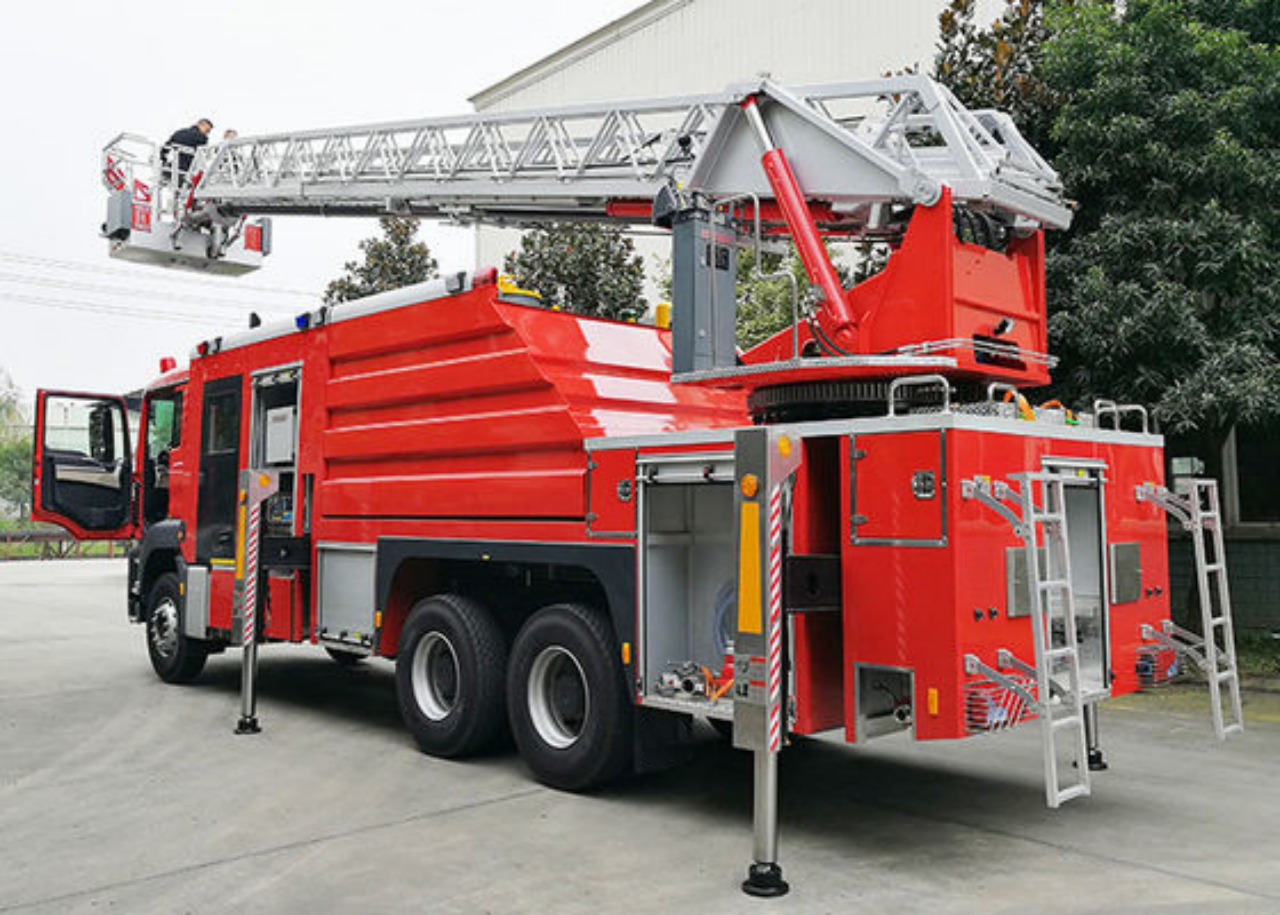
Standard Ladder Angles
The angle at which a fire truck ladder is deployed is not random. Fire departments operate under specific guidelines and best practices to ensure maximum safety and effectiveness.
A typical operating angle for a fire truck ladder is between 70 and 80 degrees from the horizontal.
- 70 degrees is a common minimum angle. At this angle, the ladder is steep but still offers good horizontal reach if needed.
- 75 degrees is often considered ideal for operations like climbing, rescues, and providing an elevated water stream.
- 80 degrees is very steep and primarily used when firefighters need to reach higher points with minimal horizontal displacement.
Why the Ladder Angle Matters
The angle of a fire truck ladder affects several critical factors:
1. Stability
A steeper ladder (closer to vertical) means less horizontal stress is placed on the truck’s outriggers and stabilizers. If the ladder is extended far outward at a shallow angle, it exerts tremendous sideways force, risking tipping the truck. To avoid this, operators must carefully manage the angle, extension, and weight on the ladder.
2. Reach
Different emergencies require different reach profiles. A fire truck might need to reach the upper floors of a tall building, or it might need to reach over an obstacle like a wall or a smaller building.
- A shallower angle (closer to horizontal) provides more horizontal reach but less vertical height.
- A steeper angle (closer to vertical) maximizes vertical height but sacrifices reach outward.
3. Safety for Firefighters
Climbing a ladder is physically demanding and risky. At very shallow angles, it becomes much harder and more dangerous to climb, especially carrying equipment or assisting a victim. The ideal angle (around 75 degrees) ensures that firefighters can climb with relative ease, maintain balance, and move safely.
4. Water Stream Effectiveness
In some operations, the ladder is used not just for access, but also as a platform for a master stream nozzle, directing water into a fire from above. The angle affects how far and where the water stream can be directed. A ladder may not provide the needed reach to hit the fire effectively.
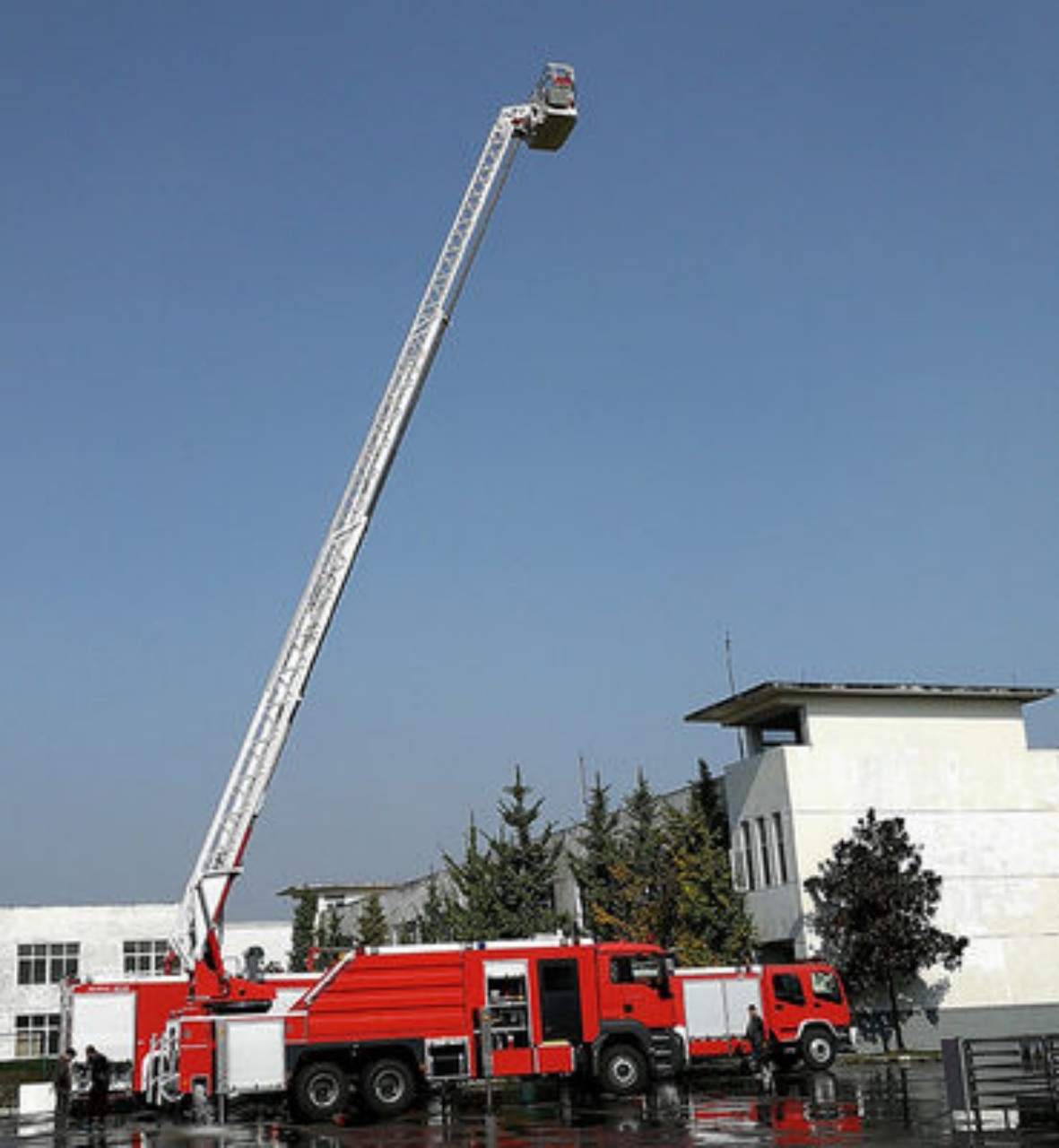
Factors That Influence Ladder Angle
The deployment angle of a fire truck ladder depends on several situational factors:
- Location of the truck: Is the truck parked directly in front of the building, or does it need to reach across obstacles?
- Height and position of the target: How high up is the rescue or fire? Is it directly above or offset horizontally?
- Ground conditions: Uneven or sloped terrain can complicate stabilizer deployment and affect safe ladder angles.
- Wind and weather: High winds can push against the ladder, and a lower extension (with a steeper angle) reduces the risk of instability.
- Obstacles: Trees, power lines, and other structures might limit the ability to set the ladder at an optimal angle.
Ladder Angle in Training and Standards
Fire departments train extensively on the proper use of aerial ladders, and part of this training involves understanding correct ladder angles. There are also formal standards governing ladder operations:
- NFPA (National Fire Protection Association) 1901 Standard: Governs automotive fire apparatus, including performance standards for ladders. It requires that aerial ladders be capable of operating at a variety of angles safely.
- Manufacturer guidelines: Every ladder manufacturer provides specifications on safe operating angles, load limits, and recommended practices.
During training, firefighters often practice setting the ladder at specific angles, extending it to particular lengths, and performing tasks like climbing, rescue, and nozzle operations at those settings.
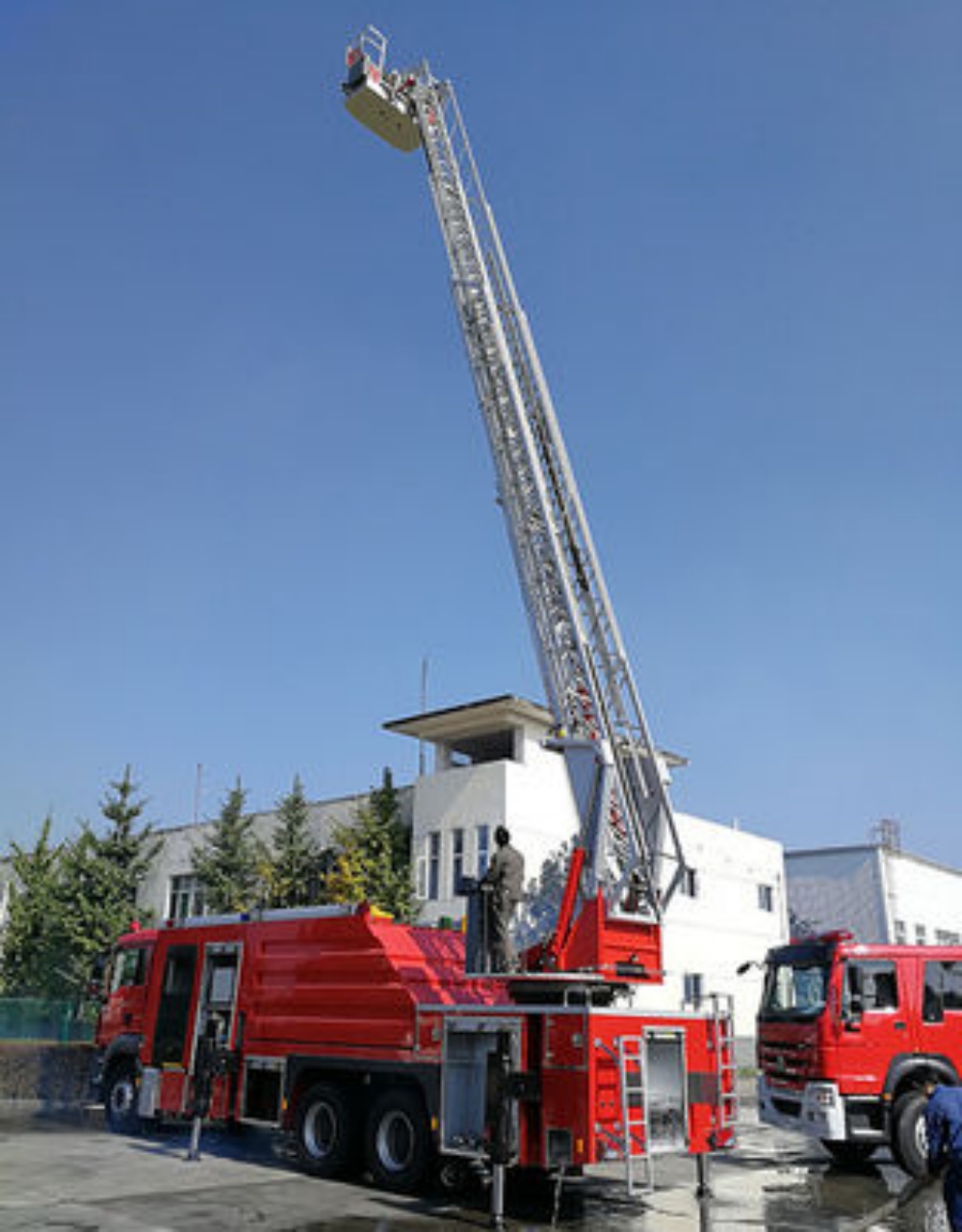
Examples of Ladder Angle Use
High-Rise Rescue
In a city environment, a fire truck responding to a fire on the 10th floor of a building might position itself directly in front and extend the ladder upward at about a 75-degree angle. This angle allows quick and safe ascent and descent by firefighters carrying gear or helping victims.
Water Tower Operations
At a large warehouse fire, the truck might set the ladder at around 70 degrees, extending out over a courtyard or obstacle to direct a heavy water stream into the fire. The lower angle sacrifices some vertical height but enables the nozzle to be positioned at the right spot for maximum firefighting effectiveness.
Rural Fire Response
In a rural area with limited access, the fire truck might have to set up on uneven terrain. Here, the safest ladder deployment might be closer to 80 degrees to maintain stability on potentially less secure ground.
Technology and Ladder Angle
Modern fire trucks are equipped with technologies that assist operators in managing ladder angles. These include:
- Angle indicators: Simple mechanical or digital devices showing the ladder’s elevation angle.
- Load monitoring systems: Sensors that warn if the ladder is overextended or operating at an unsafe angle/load combination.
- Auto-leveling systems: Help stabilize the truck on uneven ground, ensuring safe ladder operation.
Some advanced aerial ladders even have joystick controls with built-in safety limiters, preventing the ladder from being moved into dangerous positions.

Conclusion
The angle of a fire truck ladder is a crucial aspect of firefighting operations. Typically operating between 70 and 80 degrees, the angle balances the need for vertical height, horizontal reach, stability, and firefighter safety. Proper ladder angle management ensures that firefighters can perform rescues, access high points, and attack fires efficiently and securely.
Understanding the importance of ladder angles helps illustrate the complexity and skill involved in modern firefighting. The next time you see a ladder truck at work, you’ll know just how much precision and planning go into setting that ladder at exactly the right angle.
